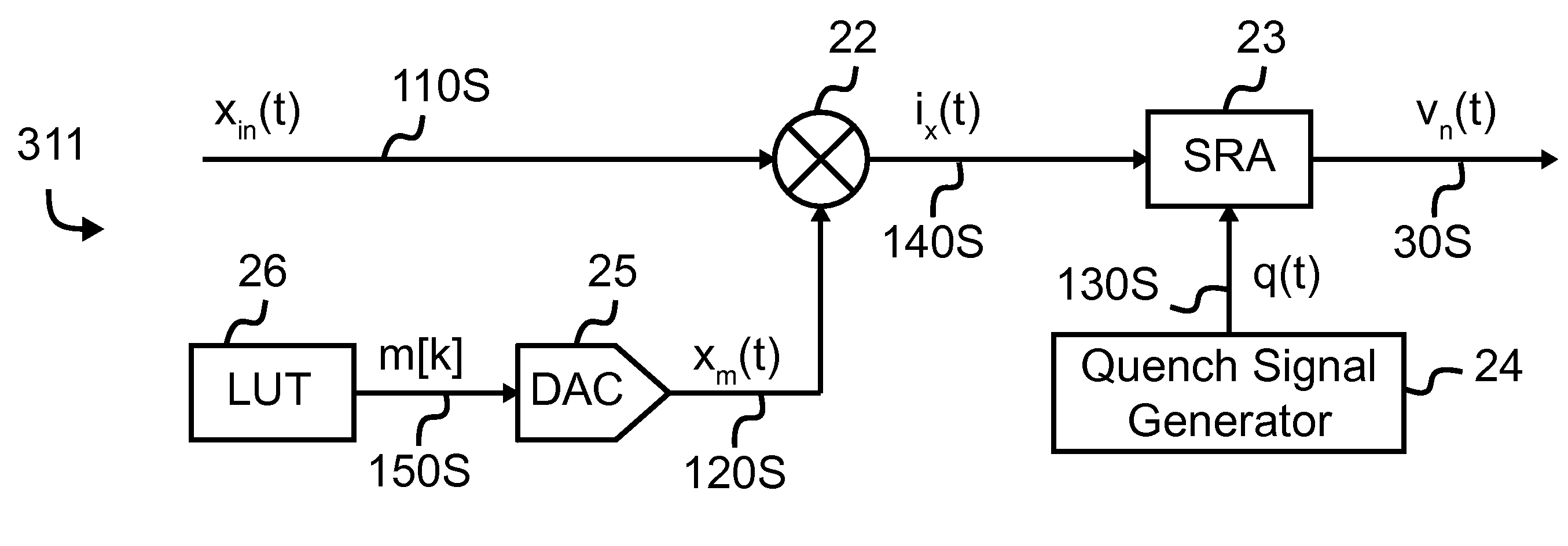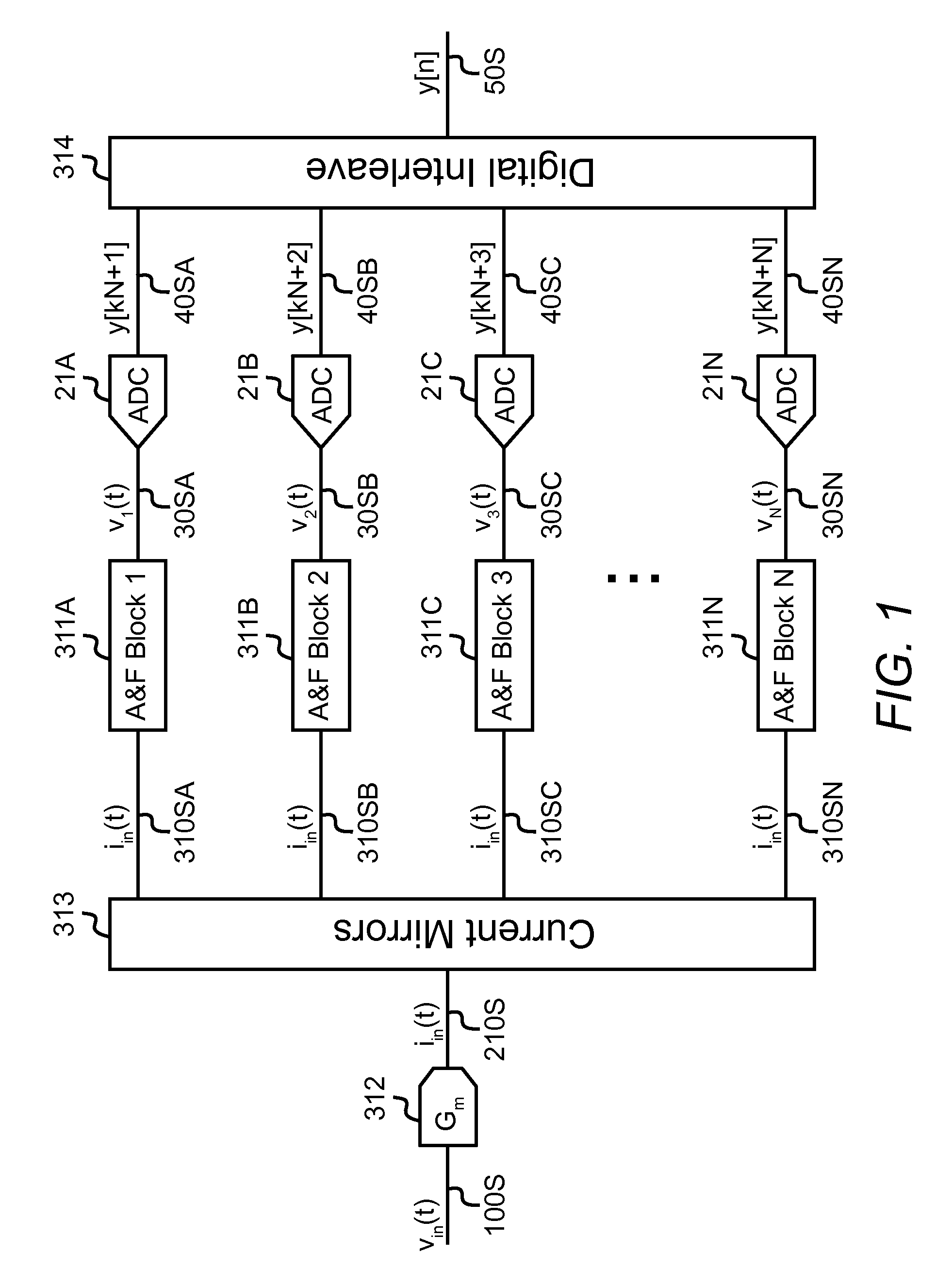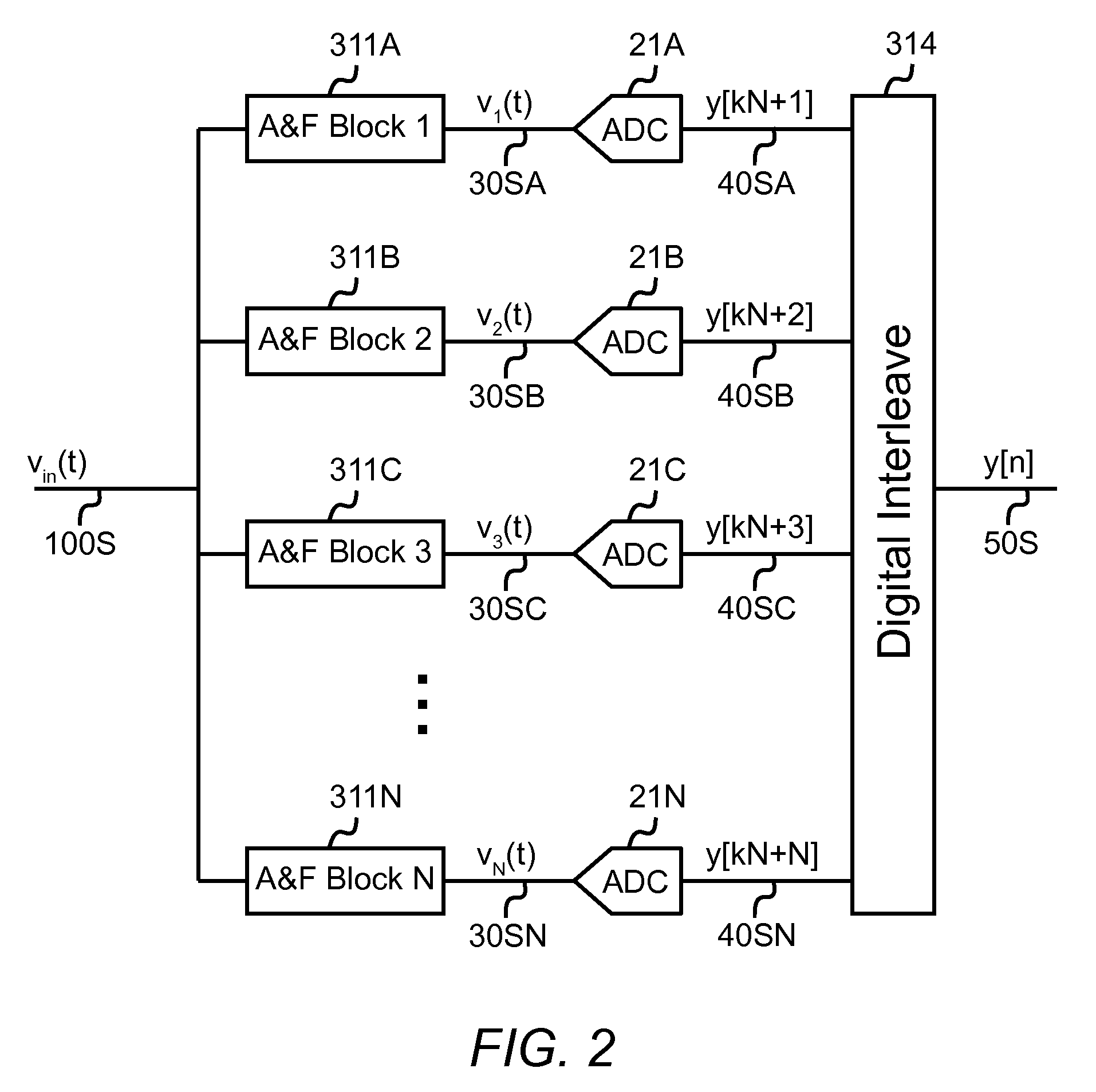Reconfigurable Amplifier and Filter Using Time-Varying Circuits
a technology of time-varying circuits and amplifiers, applied in filtering, gain control, frequency selective two-port networks, etc., can solve problems such as the drawbacks of sras that must be overcome to maximize the potential of sras, and achieve the effect of avoiding aliasing, high sampling rate, and high gain
- Summary
- Abstract
- Description
- Claims
- Application Information
AI Technical Summary
Benefits of technology
Problems solved by technology
Method used
Image
Examples
Embodiment Construction
[0039]FIG. 1 shows an embodiment of the invention with analog input voltage signal 100S which is a continuous function of time vin(t). Signal 100S communicates with a transconductor 312 whose output is an analog current 210S which is a continuous function of time iin(t). The current mirror 313 replicates current 210S and has as its outputs identical current signals 310SA-310SN (generally 310S) where 310SN represents the current in the Nth branch of the system. Each branch has one of N A&F blocks 311A-311N (generally 311) whose output signal 30SA-30SN (generally 30S) is a voltage vn(t), where n is a number between 1 and N corresponding to the particular branch.
[0040]The output 30S of each A&F block 311 communicates with one of N ADCs 21A-21N (generally 21). Each ADC has the same sampling rate of fq=fs / N. However, the sampling instant of each ADC is different. More specifically, the sampling instant of the nth ADC is offset in time from the sampling instant of the (n+1)th ADC by Ts=1 / ...
PUM
 Login to View More
Login to View More Abstract
Description
Claims
Application Information
 Login to View More
Login to View More - R&D
- Intellectual Property
- Life Sciences
- Materials
- Tech Scout
- Unparalleled Data Quality
- Higher Quality Content
- 60% Fewer Hallucinations
Browse by: Latest US Patents, China's latest patents, Technical Efficacy Thesaurus, Application Domain, Technology Topic, Popular Technical Reports.
© 2025 PatSnap. All rights reserved.Legal|Privacy policy|Modern Slavery Act Transparency Statement|Sitemap|About US| Contact US: help@patsnap.com



